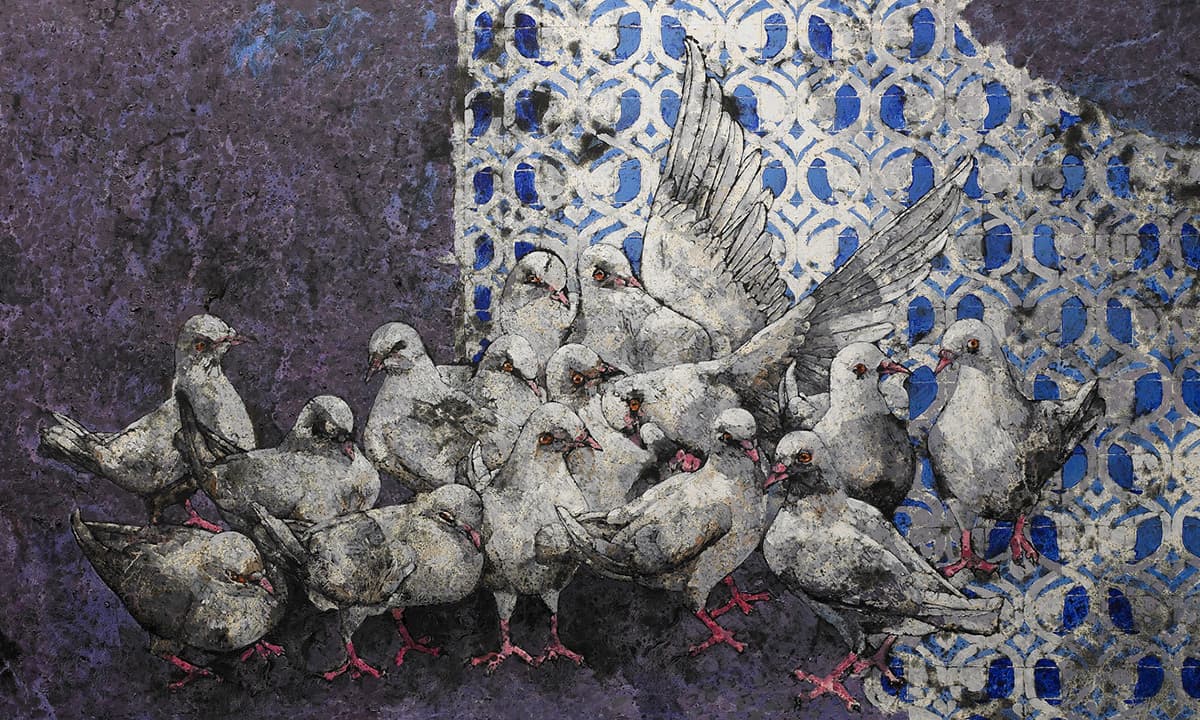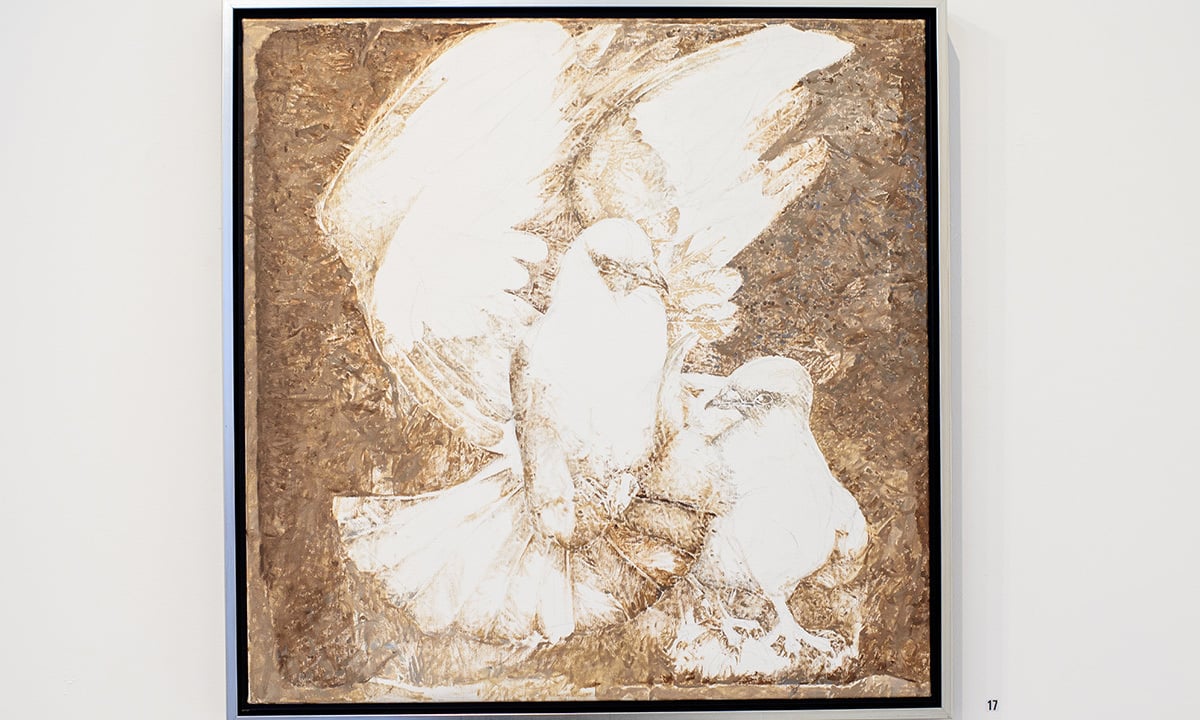
In a country that is starving, art will never be on the carte de jour. But beyond the dietary abstinence lies a rather ruinous conundrum. What is the purpose of art? Why bother with it at all? Undeniably, art and literature often slip off into the indiscernible and unintelligible; into places where we simply cannot follow. All too weary of this, the Paris Review asked the novelist, William Faulkner: “Some people say they cannot understand your writing, even after they have read it two or three times. What approach would you suggest for them?” Faulkner snapped back: “Read it four times.” A glib response; but does repeatedly engaging with the works of seminal writers and artists aid our understanding of its underlying purpose? The folks over at the Jamil Naqsh Museum certainly think so.
Of course, one hesitates to use the term ‘museum’ since it tends to lend an air of antiquity to the work on display and Jamil Naqsh’s art in anything but antique. The abstruse painter has dominated the artistic landscape of Pakistan for over half a century, honing a distinctly evocative style which is now on display, in all its sensual glory, at the sleekly purpose-built Jamil Naqsh Museum in Defence Housing Authority (DHA), Karachi.

Designed by Jamil Naqsh’s son, Cezanne Naqsh, the compound houses the white pastel coloured museum and a residential space, for Cezanne himself, partitioned by a central courtyard. Dr Faridoon Sethna, a trustee of the museum, hopes that the museum will help “provide the younger generation with a place which inspires them to do something similar in the field of art”. Indeed, simply entering the space triggers a sense of awe at the unrelenting magisterial canvases which adorn the walls. The selection at the museum comprises of artworks from Jamil Naqsh’s personal collection which also include works by his daughter Mona Naqsh and the original trailblazer himself, Shakir Ali. Since the space houses Naqsh’s work from the sixties up to the 20th century, viewers get a rare glimpse into the evolution of Naqsh’s work and an even rarer glimpse into the man himself.
Stripped of his familial anchorage following the partition of the Subcontinent, Jamil Naqsh found himself desperately trying to forge a new personal identity while simultaneously trying to rediscover his past; elements which would soon come to shape his art. The union of a traditional miniature style with a more contemporary abstract approach gave birth to a hybrid form which would eventually dominate his oeuvre. But Naqsh is no one-trick pony. While his female nudes hearken back to the works of Lucian Freud and Jean Ingres with their unabashed nature, his jarringly wormy calligraphy seems to be invoking the disquieting style of Jean Michel Basquiat rather than the words of God.

Amidst his archetypal reincarnations of pigeons and women, Jamil Naqsh’s cubist set of paintings at the museum provide a welcome change of pace. As Cezanne Naqsh points out, his father considers his cubist series as a homage to Picasso, a detail which one can hardly miss. Despite the varying style, with Jamil Naqsh there is always something to be said. Uncompromising and alluring, his art has always had the rare gift of drawing us in before forcing us to retreat, if only momentarily.
Hence, when the guest of honour at the museum’s inauguration, Senator Aitzaz Ahsan, in a characteristically dull speech, pontificates that Naqsh is a source “of pride for our nation” since his art showcases Pakistan’s “traditions and talent”, one must ask the question, is that it? Surely artists must aspire to loftier ideals than this. Although, in the senator’s defence, he did go onto state that he was by no means an art critic — not that anyone in the crowd suspected otherwise. Truly stimulating art, in Emerson’s opinion, compels us to confront our own neglected thoughts and perhaps therein lay its purpose. To dispel our cloak of practiced apathy and to regularly help reignite our senses and to this end, the collection at the Jamil Naqsh Museum dutifully serves its purpose.
It reminds us that Jamil Naqsh, like Faulkner, must be revisited from time to time. We mustn't descend into a state of despair or ridicule if the ideas on display slip through our fingers upon first viewing. We must re-engage. Linger a little longer. Cock our heads from one side to the other. Admiration does not always necessitate understanding. Naqsh recognises this, as we all must. His work unapologetically floods us with a whole host of answers, leaving us to decipher what the questions might have been.










